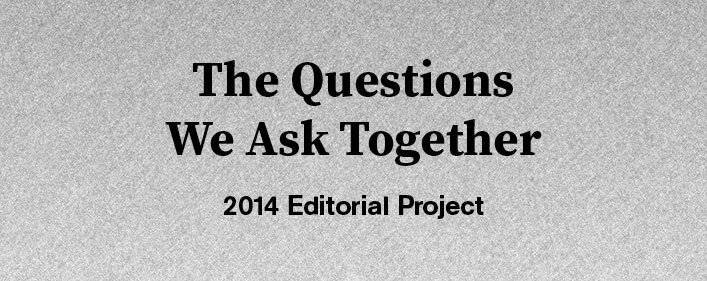How do growth, institutionalization, and formalization change the field of social practice art?
First day of “Introduction to Socially Engaged Art” class, co-taught with Faheem Majeed at University of Illinois at Chicago, Spring 2013. Photo: Abigail Satinsky.
I took part in a recent panel discussion about the failure of social practice (everyone’s favorite topic really, social practice is like the Anne Hathaway Oscar speech of the contemporary art world), and there was a lot of meandering conversations as to what the thing is in the first place; whether it was symptomatic of neoliberalism, or empowering and transforming communities, or just art, or whatever. A project was talked about that involved Chicago public school students, and during the course of the conversation one of the teachers said, “I never thought about my work with my students as social practice but now that I’ve heard about this thing, I do. I’m a social practice artist.”
And then I had a complicated conversation in my head that, maybe, is familiar to you if you struggle with social practice all the time, as I do. First, my first reaction to this person was, “No you’re not. You’re a teacher and that’s more important than the vague assertions of what counts as contemporary social practice art or not.” And then, I said to myself, “Wait, you were invited to be part of this panel, and you talk about this subject all the time, why are you so into hating on social practice?” And then, going deeper, “Maybe I have internalized the power of gatekeepers? Do I think social practice is something only authoritative figures can name? Am I secretly worried that if the gates are flung open, then social practice is everything and therefore nothing really at all?” And then, finally, “How awesome, teachers deserve to be whatever they want, and if calling yourself a social practice artist transforms your practice, that’s great.”
Perhaps that thought process just reveals how neurotic I am, but those are the questions that go on constantly in my head when I think about the rise and rise and rise of social practice going on all around me. So when I was assigned this question, I first wanted to concentrate on who is in charge of doing the growing, the institutionalization, the formalizing? I wonder if it’s a bit disingenuous for me, a person educated with a Master’s Degree in Art History and Art Administration from School of the Art Institute of Chicago, one of the most expensive schools in the country, to give the battle cry against institutionalization? At the risk of digging a very large and gnarly hole I cannot dig myself out of in 500 words or less, when I hear tenured professors tell their students to just stay in their communities and resist the MFA grind, I cannot help but also think of those artists I know that grew up isolated from this kind of talk and came to school to learn what they did not yet know, or to get out the situation they grew up in.
The disciplines of art history, museums and institutions, and professionalizing conferences all threaten to defang and depoliticize and god knows are not accessible to all. And yet they also produce its proliferation and can make it more accessible to those who do not yet know, who can then challenge those that think they already got it down. We are all social practice artists?
About the contributor: Abigail Satinsky is a writer, curator, and organizer. She is a founding member of InCUBATE and co-initiator of Sunday Soup, an international micro-granting project. She is Associate Director at threewalls in Chicago and is currently editing the book Support Networks for the Sullivan Galleries at the School of the Art Institute of Chicago as part of the Chicago Social Practice book series.
